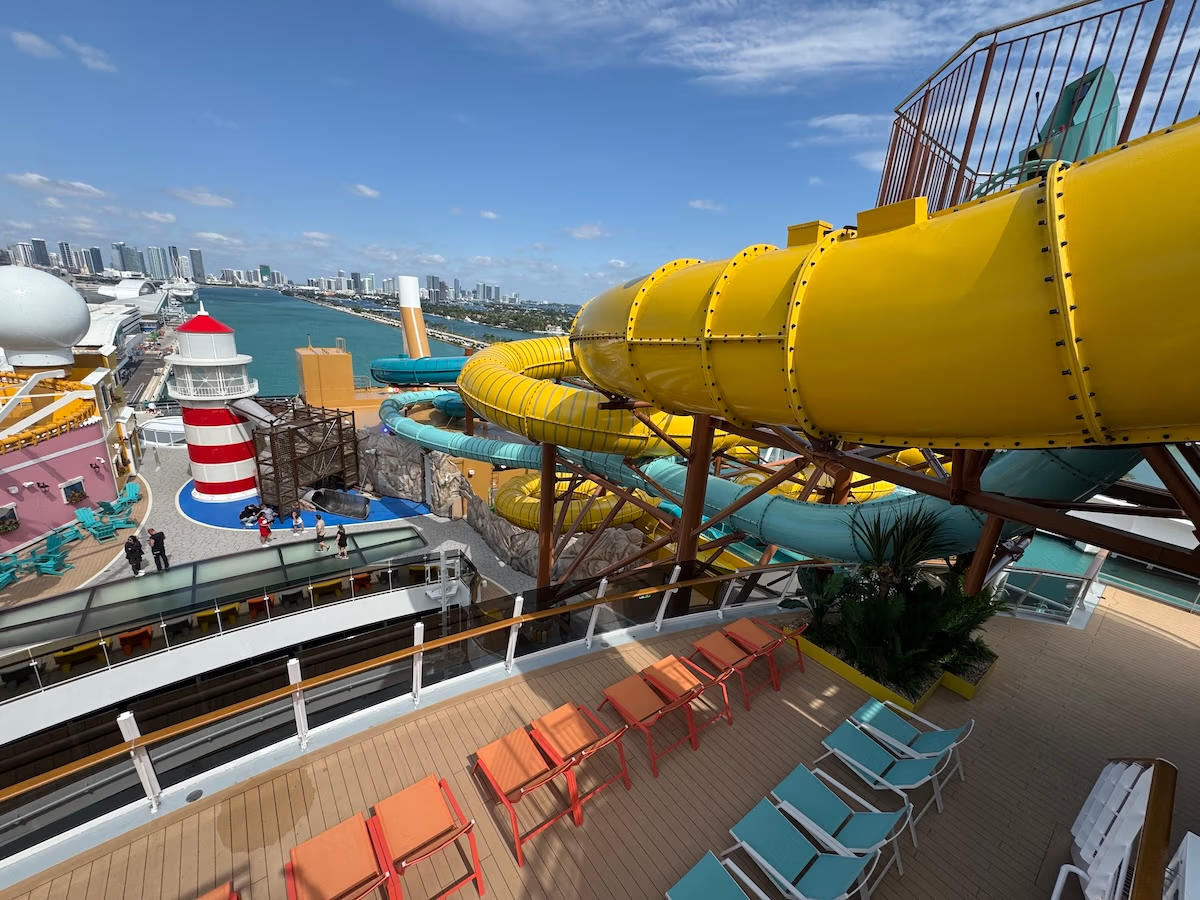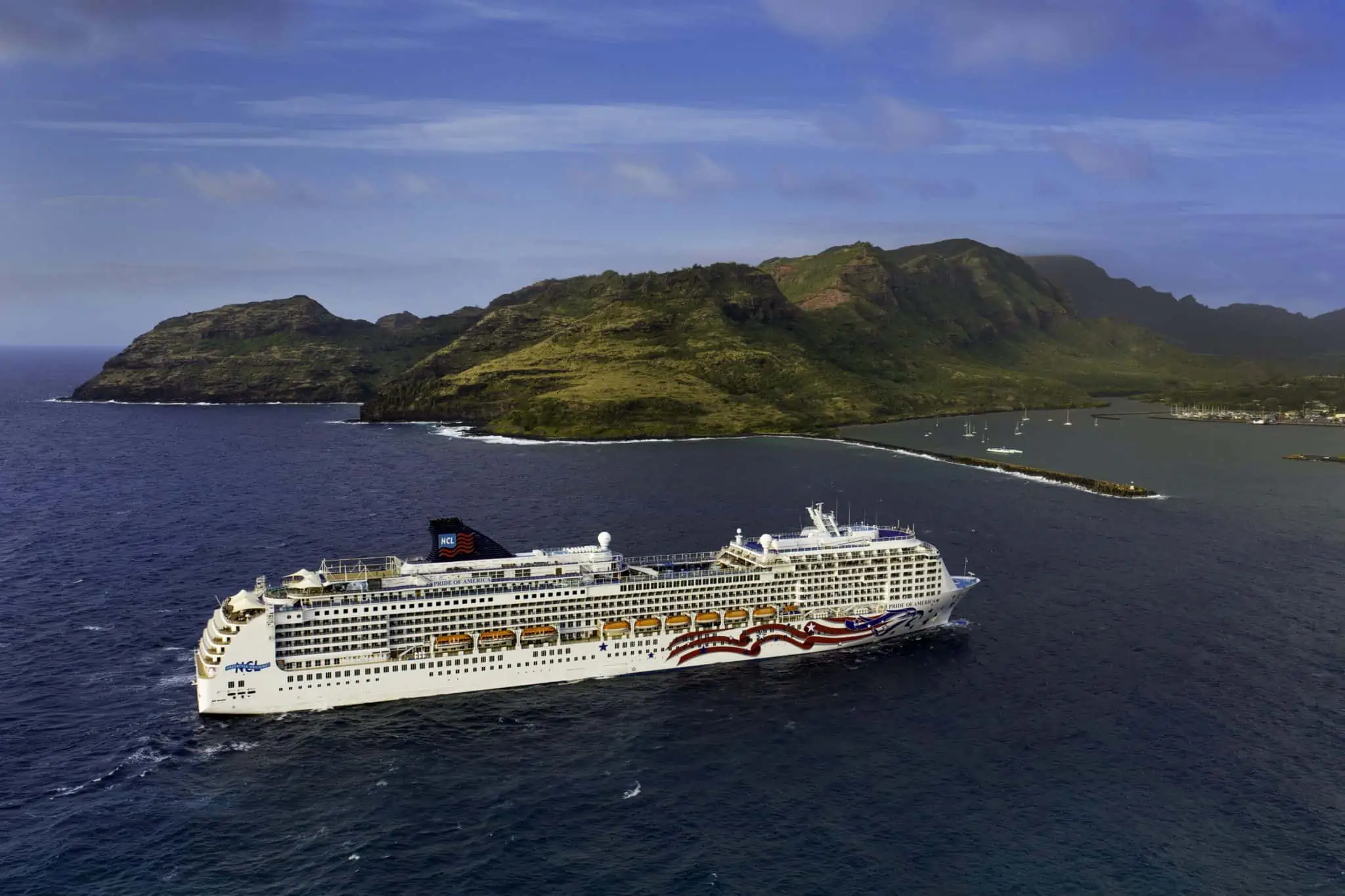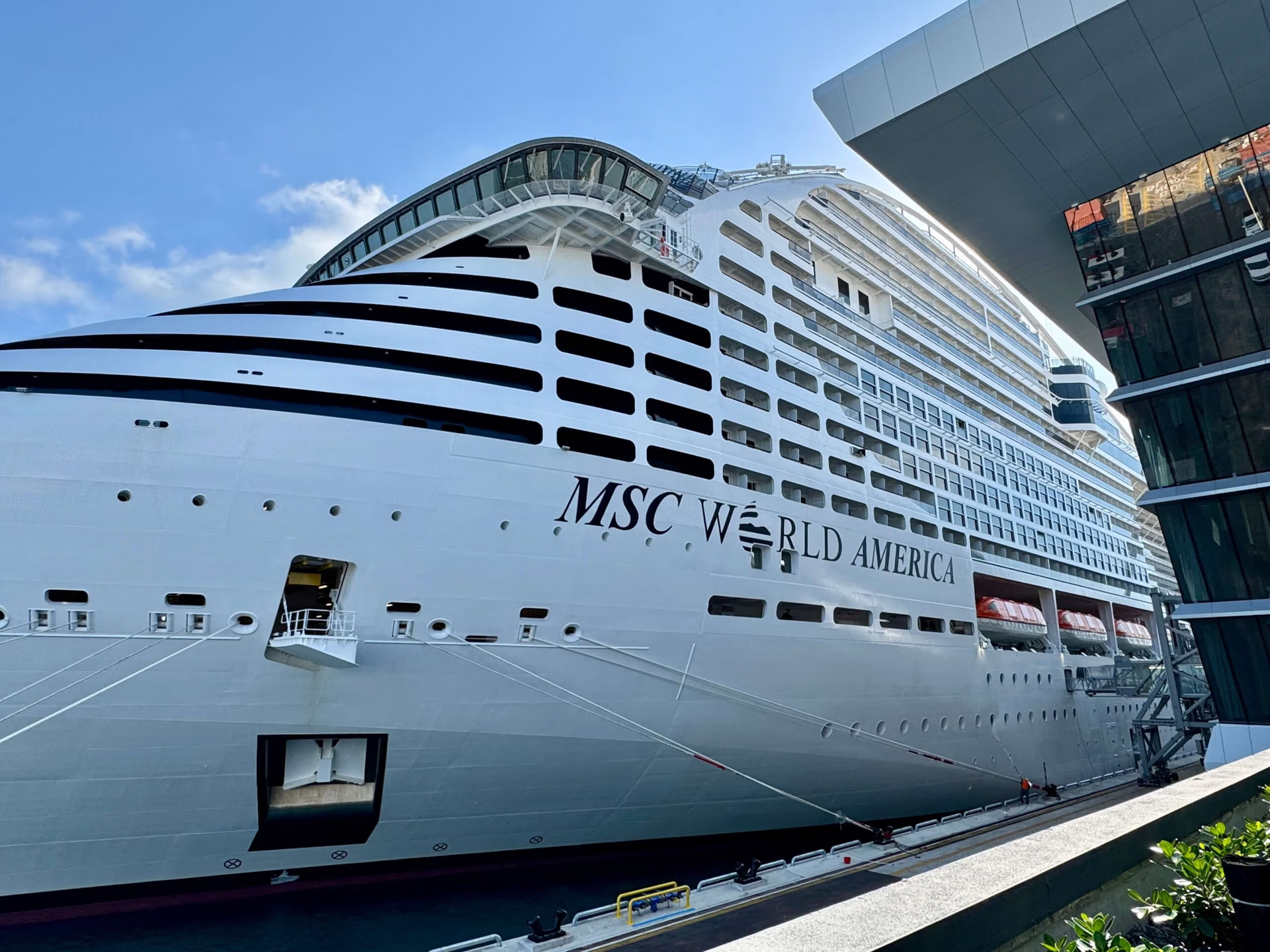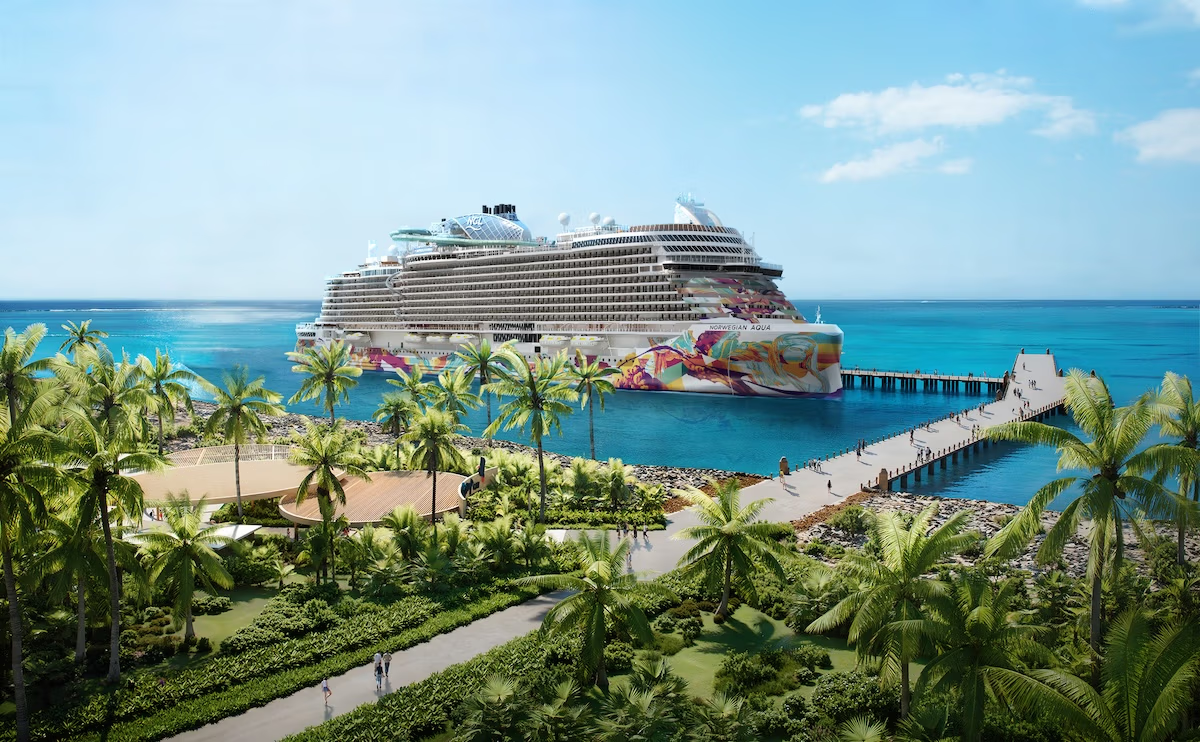What happened to Carnival Destiny? The record-breaking cruise ship that was the first to exceed 100,000 gross registered tons was a significant vessel in maritime history, recognized as a pioneering ship of its time for its size and innovative design.

This article will take you on a journey through time aboard the world’s once-largest cruise ship.
Carnival Destiny was the namesake of the Destiny class for Carnival Cruise Line, whose largest ships at the time were the 70,000-ton Fantasy class.
Launched in 1996, Carnival Destiny was a marvel of engineering and design with never-before-seen features, including the longest waterslide at sea, revolutionary for its time and set the foundation for today’s massive water parks.
When it was launched, the vessel held the Guinness World Record for being the largest passenger ship. However, it was surpassed by the Grand Princess, which weighed 109,000 tons, a few months later. Nowadays, Royal Caribbean’s mega-ships are even bigger, exceeding 200,000 gross registered tons.
| Just The Facts | |
|---|---|
| Launched: | November 1996 |
| Length: | 893 feet |
| Gross Tonnage: | 101,353 |
| Decks: | 12 |
| Guest Capacity: | 2,642 |
| Shipyard: | Fincantieri, Italy |
Significance of the Destiny Class

The Destiny class set a new standard for Carnival Cruise Line’s fleet and the cruise industry. It marked the advent of the era of “mega-ships” in the cruise industry, shaping these floating resorts’ future design and capabilities.

The introduction of Carnival Destiny showed ships could cater to massive resorts and feature a complex variety of onboard amenities and engineering prowess that guests had never experienced at sea.
Ships in the Destiny Class
| Cruise Ship | Launched |
| Carnival Destiny (now Carnival Sunshine) | 1996 |
| Carnival Triumph (now Carnival Sunrise) | 1999 |
| Carnival Victory (now Carnival Radiance) | 2000 |
These sister ships followed Carnival Destiny’s successful blueprint, further solidifying the Destiny class’s legacy in the cruise world.
The Destiny class served as the foundation for larger ships in the Carnival fleet, beginning with the 110,000-ton Conquest in 2002, the 130,000-ton Dream in 2009, and the 133,500-ton Vista in 2016. All of these ships, in one form or another, were based on Carnival Destiny’s user-friendly design and layout.
Carnival Destiny Onboard Experiences

As a prototype ship, Carnival Destiny provided various options and amenities for dining, entertainment, relaxation, and accommodation to ensure a memorable experience for travelers.
It featured the line’s first two-level main dining rooms – with servers traversing the upper level via escalators, a Carnival first–and the fleet’s largest poolside Lido restaurant. An expansive spa offering panoramic views of the sea was incorporated as well.

Interestingly, the ship initially included swim-up bars where guests could enjoy a drink without leaving the pool. However, the feature was soon abandoned due to the crew’s inability to deliver consistent service standards.
Designed by longtime Carnival interior architect designer Joe Farcus, Carnival Destiny’s decor, while more subdued than other Carnival Cruise Line ships, was still quite colorful and dramatic, reminiscent of the over-the-top “entertainment architecture” concept that was the signature element of the fleet.
Dining, Beverage, and Entertainment Options

The Carnival Destiny offered multiple dining and beverage venues to cater to different tastes and preferences.
In addition to the first two-deck-high main dining rooms, Carnival Destiny introduced the line’s first sports bar, wine bar, cigar bar, and two-level dance club, among other spaces for guests to enjoy
For those seeking entertainment and fun activities, the ship featured the largest main theater of any Carnival ship, accommodating upwards of 1,400 guests with then-new features like stage risers, lasers, and other high-tech innovations to present elaborate production shows.

It also boasted the largest casino in the fleet and acres of cantilevered, teak-planked decks for sunning and relaxing, as well as Carnival’s legendary deck and sailaway parties.
Known for its family-friendly features, one of the most talked-about amenities was a 214-foot-long water slide full of twists and turns that took center stage on Lido Deck.

Another abandoned feature was a glass dance floor on the upper level of the dance club, which, suffice it to say, gave guests on the first level quite a show from below. The glass dance floor was eliminated in dry dock and not repeated on subsequent Carnival new builds.
An Internet cafe and shipboard WiFi were added during a later refurbishment, considered cutting-edge at the time.
Staterooms and Comfort

Carnival Destiny boasted 1,321 staterooms and suites in various accommodation categories, from interior to spacious balconies and suites. Each room was designed to provide comfort and convenience, ensuring a restful haven for guests after a day of activities.
The ship also featured upgraded linens and amenities, including the Carnival Comfort Bed, to enhance the onboard sleeping experience (guests could even purchase the bed on board or once they got home).
Operational Challenges and Incidents
Carnival Destiny faced various operational challenges, including mechanical and technical issues and necessary safety repairs and updates.
In early 2000, Carnival Destiny suffered a breakdown, leaving it adrift near the Turks and Caicos Islands during a seven-day Caribbean cruise from Miami to San Juan with 2,956 passengers and 1,063 crew members on board.

The issue stemmed from a malfunction in the ship’s propulsion system, specifically the cyclo converters responsible for transmitting electricity to the propulsion motor.
Even as engineers worked to diagnose the problem, a second cyclo converter failed. Five engineers, including representatives from ABB Marine and Lloyd’s of London, were dispatched to assist.
The ship experienced ongoing propulsion issues, with its final problem just days before departing to Europe for the Carnival Sunshine conversion.
| Night owl cabins When Carnival Destiny was first introduced, several cabins near the dance club were not fully soundproof, meaning guests could hear the bass thumping all night. In true Carnival fashion, these cabins were reclassified as “night owl” cabins for those guests who tended to stay out later and thus avoided the noise. The problem was corrected in a future dry dock, and the “night owl” accommodations were no longer available. |
Adding Balcony Cabins
Given the popularity of balcony cabins in the 2000s, Carnival Destiny received the addition of 48 private balconies to staterooms with floor-to-ceiling windows and 230 square feet.
Final Voyage of Carnival Destiny

Carnival Destiny’s last series of voyages from Miami garnered attention as the ship prepared for a major transition. After a history of serving millions of satisfied passengers, it embarked on an 18-night transatlantic cruise to Italy, marking the end of its service as Carnival Destiny.
Forty-nine days later, the ship would emerge from the shipyard in Cadiz, Spain, as Carnival Sunshine then returned to the Caribbean following a 16-night transatlantic cruise in late 2013.
It kept Carnival Destiny’s pioneering ways, operating from various ports, including New Orleans, Port Canaveral, and Charleston.
What Happened to Carnival Destiny?

Cruise ships historically last around 30 years before they are sold or scrapped. Around the 15-year mark, cruise lines typically begin evaluating the ship’s consumer appeal and planning what the back half of its life will look like.
Carnival decided to go all-in on the refurbishment of Carnival Destiny, which underwent a substantial $155 million refit, one of the largest shipboard renovation projects in history.

The changes in the ship’s design were so pronounced that Carnival Destiny was renamed Carnival Sunshine.
The refit process gave the ship a new identity and introduced Fun Ship 2.0 features (Carnival branding launched in 2011 aboard Carnival Liberty) that significantly enhanced guests’ onboard dining and entertainment experiences.
The Refit Process

The ambitious refit of Carnival Destiny took place in a drydock at Navantia shipyard in Cadiz, Spain. Over 49 days, the ship was meticulously refurbished and emerged with not just a new name but a series of structural and design transformations, including a stunning three-deck-high signature waterfall feature, that redefined its offerings.

The extensive upgrades included the addition of 141 new staterooms and suites, new dining and entertainment spaces and technological enhancements throughout the vessel.
Fun Ship 2.0 Features

Fun Ship 2.0 features introduced on the Carnival Sunshine raised the bar for entertainment and dining on the high seas. These enhancements included new dining venues like Guy’s Burger Joint, BlueIguana Cantina, RedFrog Rum Bar, and Alchemy Bar and entertainment options such as Playlist Productions, and Hasbro, The Game Show.
Delayed Launch
Following a fire on Carnival Triumph that garnered international headlines, the debut of Carnival Sunshine was delayed by several weeks to redesign its engine spaces and add a variety of fire-protection features, part of a $300 million fleetwide safety upgrade.
Impact on Carnival’s Fleet Evolution

Carnival Destiny’s conversion to Carnival Sunshine significantly influenced Carnival Cruise Lines’ approach to expanding and modernizing its fleet.
The Destiny class marked a pivotal shift towards larger and more amenity-filled vessels by paving the way for successive classes of ships and leaving a lasting legacy through its innovative design.
RELATED: History of Carnival Cruise Line
The conversion proved so popular that Carnival extended the concept to Carnival Triumph and Carnival Victory, each undergoing similar, albeit smaller, renovations costing tens of millions of dollars.
Carnival Sunshine was among its first “Fun Ships” to incorporate the brightly-hued resort-style design of the line’s newer ships.
The over-the-top decor designed by Joe Farcus was eliminated from the ship and set the stage for toned-down interiors on future Carnival refits.
Introduction of Newer Ship Classes
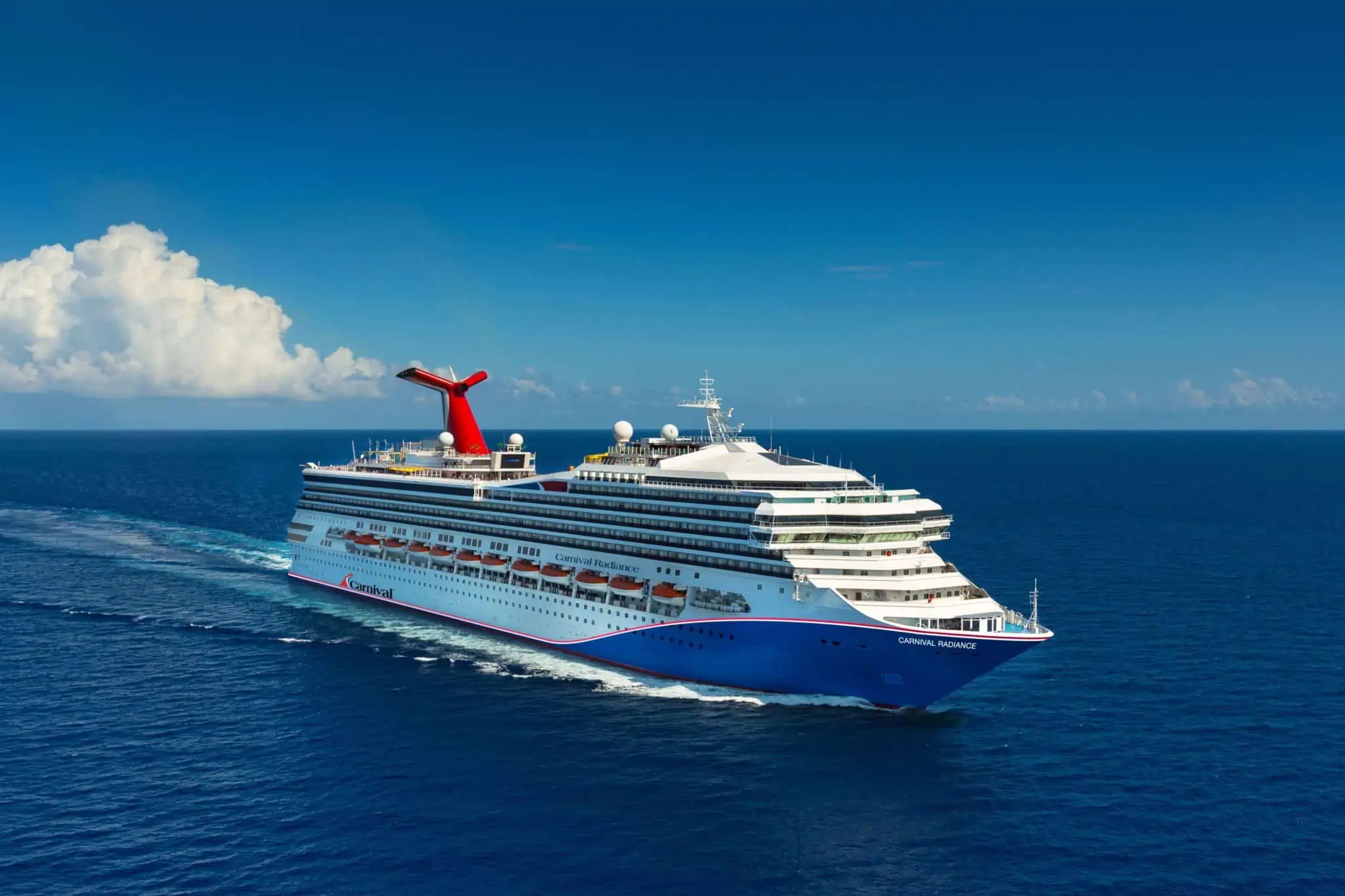
Carnival Cruise Lines has consistently worked on introducing advanced ships to replace older models, each offering a step up in size, features, and passenger amenities.
| Following the transformation of the Carnival Destiny, sister ships Carnival Triumph and Carnival Victory were also converted to Carnival Sunrise and Carnival Radiance, respectively, enhancing the evolution of the fleet by setting new standards for Carnival. |
Most notably, the introduction of the 110,000-ton Carnival Conquest class in 2002, which was essentially Carnival Destiny with an additional mid-ship section incorporated during design and construction, further expanded these offerings, moving the company toward larger ships that could cater to the growing demand for innovative and diverse cruise experiences, particularly the family cruise market And it has only grown from there.
Legacy of the Destiny Class

Carnival Destiny was not merely a ship but a forerunner that inspired a series of transformative design improvements within the fleet. As the first passenger ship to surpass 100,000 gross tons, it established a blueprint for future vessels for Carnival and other industry operators.
For instance, the Carnival Triumph and Carnival Victory evolved into Carnival Sunrise and Carnival Radiance, respectively.
These transformations included multimillion-dollar refits and name changes, reflecting Carnival’s commitment to delivering up-to-date, feature-rich cruising experiences.
The innovation brought by the Destiny class continues to resonate through the fleet, including introducing new flagship vessels bearing iconic names, such as the Mardi Gras.
Carnival Sunshine Tour [VIDEO]
Frequently Asked Questions
When was the Carnival Sunshine last refurbished?
Carnival Sunshine’s last dry dock took place in 2021. However, the major refurbishment took place in April 2013, where it received a complete transformation and exciting upgrades, including adding new features and amenities.
What is Carnival Sunshine’s passenger capacity?
Carnival Sunshine has a passenger capacity of approximately 3,000 guests, which allows for a comfortable and spacious cruise experience.
How does Carnival Sunshine differ from Carnival Destiny?
Carnival Sunshine differs from Carnival Destiny because it boasts modernized facilities, additional dining options, and enhanced entertainment venues.
What are some cabins to avoid when booking a room on Carnival Sunshine?
Avoiding cabins directly under the lido deck or near elevators or other high-traffic areas is generally recommended, as they may experience more noise disruptions.


